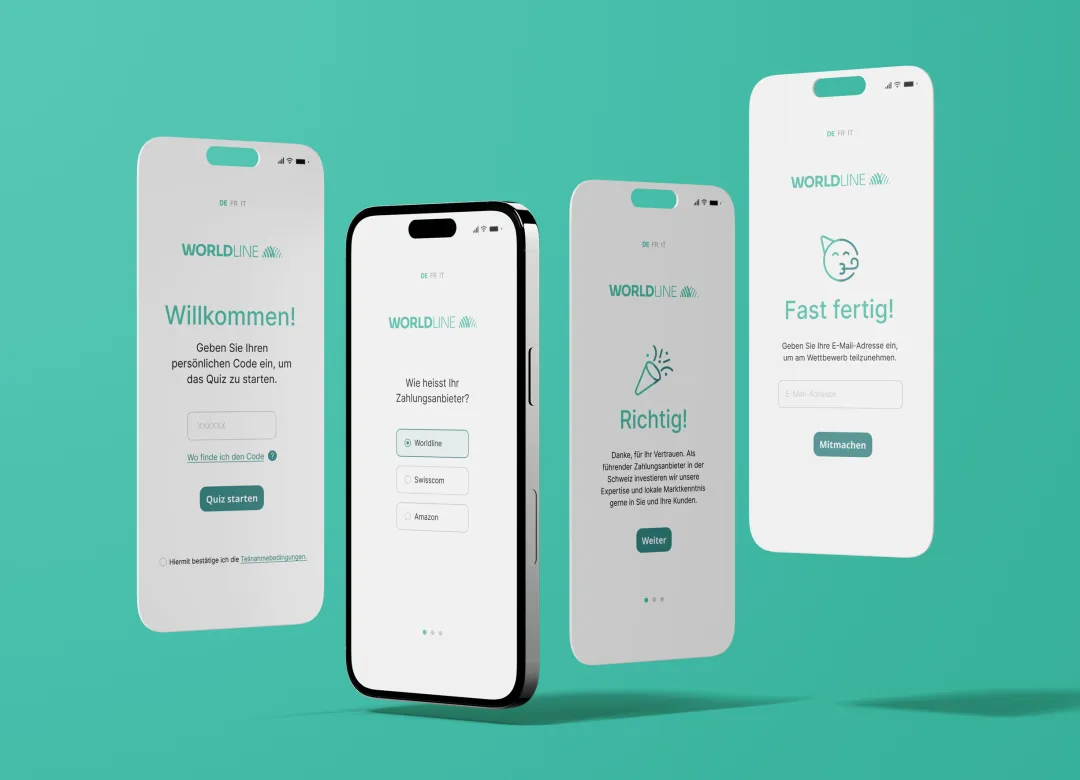How to Turn your ESG Strategy into an Employee Philosophy

An ESG strategy is only as strong as its support within a company. No matter how much thought goes into its development – if the employees are not on board, the ship won’t go very far. This is everything we’ve learned by navigating our ESG projects.
An ESG strategy is only as strong as its support within a company. No matter how much thought goes into its development – if the employees are not on board, the ship won’t go very far. This is everything we’ve learned by navigating our ESG projects.
ESG is on everyone's lips. The trendiest abbreviation, if you will. This year alone, the number of Sustainability Reports in our portfolio has grown visibly. Obviously, we couldn’t be more delighted about it all. But the experience has not just helped us make sense of the great sustainability alphabet soup (hey there, GRI, SDGs, CSR & SBTi!). It also made us aware of what should always be there when it comes to ESG: employee engagement.
External is good, but internal comes first
More often than not, ESG communication will focus on letting the stakeholders know what’s going on. Companies from a wide range of industries are feeling the pressure to position themselves publicly on relevant ESG issues. Because of that, they are increasingly investing in communication measures that make their efforts visible. That’s perfectly reasonable. But we would argue that if the ESG strategy is to become part of the company, internal communication should be just as important. And science is proving us right, by the way.
It’s all about the combination
A 2020 study examining the interplay between ESG and employee satisfaction, among other things, came to a similar conclusion. The authors write that ESG signals only have an impact on financial returns, if they are accompanied by increased employee satisfaction. That means companies need employee buy-in to make their ESG initiatives work. And it also means that strong ESG efforts can lead to engaged, more satisfied employees, because they feel their employer's values align with their own. The key is getting employees involved, so that everyone is pulling in the same direction.
But where to begin? We have summarized our 5 best practices that we learned from our ESG projects:
1. Start with what you have
Most companies have long been running some projects or initiatives in the realm of ESG. These could range from trainee programs and employee surveys to things like charging stations for e-bikes or recycling initiatives. We don't have to start from scratch, but rather keep the stuff that’s working and expand on it if necessary. This will also let employees know that the new strategy is here to strengthen the company's existing values, not to turn them on their heads.
2. Let each team member know they count
Most people find it easier to change their own behavior when the goals and rules of the game are clear. That's why it's important to communicate at every level what the expectations are and what kind of contribution, however small, each individual can make to the big picture. This is where the so-called "network effect" can come into play: If a co-worker leads by example, others find it easier to follow.
3. Collect input from employees
Be it at the annual meeting, in the employee survey or on the bulletin board: collecting feedback from employees will always be worthwhile. The collected data can be incorporated into ESG reporting, but it also helps to identify existing conflicts and potential for improvement. And to respond accordingly. After all, if you want to engage your employees, you have to listen to them first.
4. Embed ESG in your corporate culture
To ensure that the ESG strategy won’t be consumed and then forgotten like a nice campaign, the values must be integrated into work culture. Values that the company stands for (corporate culture) should be on the same level, not above them. This ensures credibility and strengthens both employer branding and recruiting.
5. Drive change from top to bottom
Like any other (corporate) cultural change, the ESG strategy must be supported and embodied by the employees. To do this, they need to be equipped with the right know-how and relevant tools. But it shouldn’t just look like a lot of extra work. Incentives or gamification approaches can help motivate a team to join in. It’s also a good idea to collaborate with employees who are particularly committed to the topic or offer expertise in a specific ESG area. As ambassadors, they can contribute to training concepts or internal communication. On the other hand, the management needs to fully support the ESG strategy, creating the right incentives top-down and leading by example (governance).
Bonus points: ESG and Employer Value Proposition
Granted, this isn’t really about employee engagement, but there’s one other thing to remember: For a while now, ESG has been a decision-making factor not only for potential customers, but also for potential employees. Several studies show that today’s employees take a close look at a company's values. And if the employees find ESG values they can identify with, the company gets a decisive advantage. This makes it all the more important to clarify which ESG goals should be prioritized for one's own company. And then to determine exactly how individual employees can make their contribution. If you do all this AND manage to communicate it well, you can find people who support your ESG values from the very beginning. And they will work hard to achieve the goals together.
We believe sustainability should not just be a chapter in a company’s strategy. It should also be communicated in a sustainable (as in long-term and far-sighted) and profitable way. And maybe you know us a bit already – we like things to be beautifully designed, yes. But only if they’re also honest and smart.
References:
The Need for Employee Buy-in for ESG to Work
ESG Success: Employee Engagement Best Practices
Five Ways that ESG Creates Value


